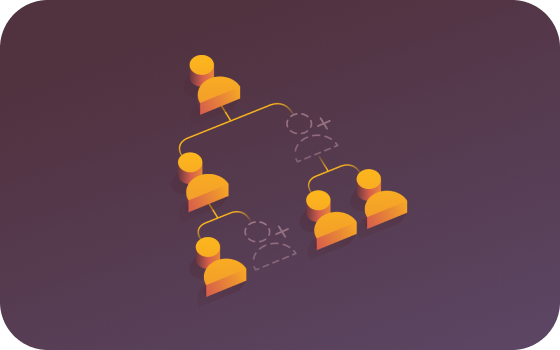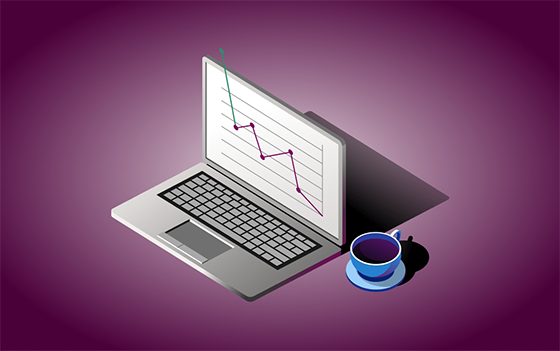Top 8 vendor management systems (VMS) for 2025
In this article
Managing vendors is one of those business tasks that can quickly become a challenge without the right tools. From tracking contracts to paying invoices, it’s easy for things to spiral out of control if you don’t have a good system in place. Mismanaged vendor relationships can lead to missed deadlines, wasted money, and unnecessary stress.
Vendor management systems (VMS) can make the process simpler by helping you track vendor performance, payments, and compliance, all in one central platform. If you’re looking to save time and run a tighter ship, a VMS may be the way forward.
In this article, we share some of the best vendor management systems for 2025 and how they can help your business.
What is a VMS?
A vendor management system is software that helps businesses manage their suppliers and contractors more efficiently. It’s like a central hub for keeping track of everything related to your vendors — contracts, performance, payments, and more.
A VMS acts as a single platform where you can manage every detail of your vendor relationships. This includes tasks like collecting and storing vendor data, overseeing contracts, tracking service delivery, and managing financial transactions.
The system can also help you efficiently handle vendor-related workflows from one place. These workflows may include selecting suppliers, onboarding them, and processing invoices. This centralized approach reduces the need for manual tracking and provides a clear overview of all vendor-related activities.
4 benefits of using a vendor management software
Managing vendors manually can be time-consuming and prone to mistakes. Vendor management tools take the guesswork out of the process, making it easier to keep things organised and efficient. Here are four key benefits of using a VMS:
Streamlined vendor onboarding and management
Vendor management software simplifies bringing new suppliers on board. It keeps all the necessary information, like contracts, certifications, and contact details, stored in one place, making it easy to track and update. With clear workflows, you can get new vendors up and running quickly without unnecessary back-and-forth.
Improved cost control and budgeting
Staying on top of vendor costs is much easier with vendor management software, because it provides a clear view of how much you’re spending, who you’re spending it with, and where you might be able to save. By tracking invoices and payments in real time, businesses can avoid overspending and stay on budget.
Enhanced vendor performance tracking
A VMS makes it easy to monitor how vendors are performing. You can set up key performance indicators (KPIs) and track metrics like delivery times, quality of work, or compliance with contracts. If issues arise, you’ll have the data to address them quickly.
Automation of vendor payments
Processing payments manually can lead to errors and delays. Vendor management software automates this step, ensuring accurate and timely payments. It also provides a detailed payment history, so you’ll always have records ready if you need them.
Top 8 vendor management systems
Choosing the right vendor management system can feel overwhelming with so many options on the market. To help you narrow it down, we’ve compiled a list of eight of the best vendor management software for 2025, each offering unique features and capabilities to suit different business needs.
1. Rippling
Rippling is a powerful all-in-one workforce management platform that combines vendor management with HR, payroll, and IT tools. It can help businesses handle everything from vendor payments to compliance, all from a single system.
Key features
Centralized database for managing all vendor details
Automated payment workflows, including support for global transactions in over 100 currencies
Seamless integration with accounting tools and CRMs
Scalable for businesses of any size, from startups to large enterprises
Customizable workflows to meet your specific business needs
Strengths
Combines vendor management with other core business tools in one platform
Simplifies global payments with automatic currency conversion and tax compliance
Provides real-time visibility into spending, helping businesses avoid unnecessary costs
Offers flexible customization, making it easy to adapt to different industries
Features granular, automated approval workflows for enhanced oversight and control
Delivers real-time notifications on vendor payments to flag any irregularities or transactions above certain volumes
2. SAP Fieldglass
SAP Fieldglass is a cloud-based vendor management system that can help businesses manage external workforce and service providers.
Key features
Management of contingent workers and services
Real-time analytics for tracking vendor performance and spend
Workflow automation for procurement and vendor selection
Tools for contract compliance and risk management
Mobile app
Integration with other SAP solutions and third-party systems
Strengths
Large, complex organizations with diverse vendor needs can use SAP Fieldglass to manage their operations.
It has a focus on compliance and risk reduction.
Weaknesses
There can be a steep learning curve because of the system’s complexity and wide range of features.
It's most suitable for larger enterprises, which might make it overwhelming or unnecessary for smaller businesses.
3. Airbase
Airbase is a spend management platform that combines vendor management with accounts payable, corporate cards, and expense tracking.
Key features
Includes vendor and expense management
Automated approval workflows for vendor payments
Virtual and physical corporate cards for vendor payments
Real-time reporting for expense visibility
Tools for managing subscription payments and recurring vendor bills
Strengths
Can be a good option for businesses seeking a unified spend management solution.
Has a focus on automation, reducing the need for manual processes.
Weaknesses
Airbase isn’t as comprehensive for large enterprises with complex vendor ecosystems.
Users mention that receipt uploads can be frustratingly inconsistent at times, which undermines the efficiency the platform is designed to deliver.
4. Coupa
Coupa is a spend management platform that supports vendor management, procurement, invoicing, and expense tracking.
Key features
Real-time visibility into spending and budgets
Tools for procurement, invoicing, and expense management
AI-driven insights to improve cost-saving opportunities
Integration with ERP systems like SAP and Oracle
Compliance tracking for vendor contracts and purchases
Strengths
Coupa can offer scalability, which may make it suitable for large enterprises with complex vendor and procurement needs.
The platform provides analytics and AI-driven insights, which can help businesses identify cost-saving opportunities and improve decision-making.
Weaknesses
Users report the interface feels unintuitive and clunky, which can make navigating the platform frustrating.
Implementation can be time-consuming, requiring significant effort to integrate with existing systems and processes.
5. OneTrust
OneTrust is a third-party risk management platform that can help businesses manage vendor relationships with a focus on security, compliance, and data privacy.
Key features
Centralized platform for managing third-party risks and vendor compliance
Tools for conducting vendor assessments and risk evaluations
Integration with other compliance and governance tools
Workflows for vendor onboarding and monitoring
Reporting and dashboards for tracking vendor performance
Built-in compliance features for regulations like GDPR and CCPA
Strengths
OneTrust can help businesses maintain compliance with complex regulatory frameworks.
The platform provides risk assessment tools, allowing organizations to identify and mitigate potential vendor risks early.
Weaknesses
Some users say that the interface feels clunky and unintuitive, making it hard to navigate efficiently.
Users mention that the support team struggles with responsiveness, often taking weeks to resolve issues.
6. QuickBooks
QuickBooks is an accounting platform with basic vendor management capabilities built into its system.
Key features
Dashboard for tracking vendor payments and bills
Tools for recording and categorizing expenses by vendor
Automated payment scheduling
Integration with payroll and tax filing tools
Vendor transaction histories
Simplified tax reporting with expense tracking by vendor
Strengths
QuickBooks provides a user-friendly platform that enables small businesses to handle vendor management and accounting.
The system integrates with other QuickBooks features, creating an all-in-one solution for managing finances.
Weaknesses
Setting up and customising the platform can be challenging, often requiring a steep learning curve or professional assistance.
Some users find QuickBooks’ reporting tools limited for tracking vendor-specific performance metrics.
7. Workday
Workday’s VNDLY Vendor Management System focuses on managing external workforces and services procurement.
Key features
Platform for managing contingent workers and vendors
Real-time dashboards for tracking vendor performance and spend
Workflows for onboarding and compliance checks
Reporting and analytics tools to evaluate vendor performance
Mobile-friendly platform
Strengths
Workday's VNDLY integrates with its broader ecosystem, which can make it suitable for companies already using Workday products.
The system offers compliance and governance tools, which can help businesses reduce risks associated with vendor relationships.
Weaknesses
Some users feel that the platform still needs improvement in terms of features and functionality.
The interface can overwhelm users who are new to VNDLY, leading to confusion during setup and use.
8. ServiceNow
ServiceNow’s Vendor Manager Workspace can give businesses visibility into their vendor relationships while simplifying operations and assisting with compliance.
Key features
Workspace for managing vendor relationships and performance
Real-time dashboards for vendor analytics and tracking KPIs
Workflows for onboarding, compliance, and performance reviews
Integration with ServiceNow’s broader IT and service management solutions
Tools for contract and risk management
Strengths
ServiceNow provides a customizable platform that integrates with its IT management ecosystem.
The real-time dashboards offer visibility into vendor performance and compliance metrics.
Weaknesses
The platform includes a lot of features that can take time to understand and may require proper expertise to configure effectively.
Customizing the platform for specific enterprises can be time-consuming, especially for organizations with unique requirements.
How to choose a vendor management system
Finding the right vendor management solution can feel overwhelming, especially with so many options available. To make the decision easier, you can focus on these key factors and how they’ll impact your business:
Ease of use and user experience
A system that’s difficult to navigate can cause delays and frustration for your team. Look for software with an intuitive interface that’s easy to learn and use daily. For example, if your team needs to onboard a new vendor quickly, the process should take just a few clicks, not hours of training or digging through menus.
Integration with existing tools
Your vendor management software should work seamlessly with the tools your business already relies on, like accounting software, payroll systems, or CRMs. For instance, if you use QuickBooks for financials, make sure the VMS can sync vendor payments directly with your QuickBooks account to avoid double entry or manual errors.
Customization and flexibility
Every business has unique needs, so the vendor management software you choose should adapt to your workflows, not the other way around. For example, a construction company may need customized workflows to track vendor compliance for safety regulations, while a tech company might prioritize performance metrics for service providers.
Scalability
As your business grows, your VMS needs to grow with you. Choose vendor management software that can handle more vendors, larger budgets, and additional features without requiring an overhaul. For example, a startup might start with just a few suppliers but may need the capacity to manage hundreds as they expand globally.
Customer support options
Reliable support can make all the difference when you hit a roadblock or need help to customize the system. Look for a provider with responsive support, such as live chat, phone, or dedicated account managers. Imagine having an urgent issue with a delayed vendor payment and needing help — quick, accessible support can save the day.
4 essential features of a vendor management software
A reliable vendor management solution should include features that simplify and enhance the procurement process, vendor relationships, and overall operations. Here are four key features every VMS should have:
Vendor onboarding
A good VMS streamlines the vendor onboarding process by automating tasks like collecting required documents, verifying credentials, and setting up contracts. This ensures you can bring new vendors into the procurement process quickly and efficiently. For instance, when onboarding a vendor for a contingent workforce project, the VMS can handle compliance checks and approvals, minimizing delays and errors.
Payment processing
Managing payments is a critical part of vendor management, and a VMS simplifies this with automated workflows. It tracks invoices, schedules payments, and ensures timely disbursements. For example, when dealing with multiple suppliers in a procurement cycle, the VMS can automatically match invoices to contracts and flag discrepancies for review, ensuring smooth payment operations.
Compliance tracking
Compliance is essential, especially when working with a contingent workforce or vendors subject to regulatory requirements. A VMS keeps track of certifications, contract terms, and other compliance-related details.
Reporting and analytics
Insightful reporting and analytics tools in a VMS provide a clear view of vendor performance, spending patterns, and the overall procurement process. These insights help businesses make informed decisions about their vendor relationships. For instance, a VMS can generate reports showing which vendors consistently meet deadlines and deliver high-quality work, allowing businesses to prioritize those suppliers in future procurement strategies.
Experience a better way to manage vendors with Rippling
Rippling isn’t just a vendor management solution — it’s a unified workforce management platform that combines HR, payroll, IT, and spend management. This approach ensures that every aspect of your business works seamlessly together, eliminating inefficiencies and simplifying workflows.
With Rippling Spend's and expense management software, you can manage all your business expenses in one place, from vendor payments to spend approvals and tracking. You can pay invoices globally in over 100 currencies while maintaining compliance with tax and reporting requirements. The system automates critical workflows, giving you real-time visibility into vendor spend and enabling you to approve payments with just a few clicks.
Rippling Spend also integrates with your existing tools, like Xero, Quickbooks, and Netsuite, making it easier to streamline your procurement process while reducing manual work and the risk of errors. Run it as a standalone tool connected to your ERP system and finance data, or layer it on top of the Rippling workforce management platform for more powerful automation and deeper insight.
The best part? Rippling can grow with your business. Whether you’re managing a handful of vendors or expanding to a global network, Rippling’s scalability ensures that the platform adapts to your changing needs without missing a beat.
Vendor management systems FAQs
What is an example of vendor management?
Vendor management involves the handling of every aspect of your relationship with suppliers or service providers. For example, let’s say you work with a marketing agency. Vendor management would include negotiating their contract, ensuring you pay their invoices on time, tracking their performance against agreed deliverables, and maintaining compliance with any regulations. Essentially, it makes sure the partnership runs smoothly and delivers value to your business.
What is a vendor?
A vendor is any individual or company that provides goods or services to your business. This could include everything from suppliers of raw materials to IT contractors or service providers, like cleaning companies. Vendors play an essential role in helping businesses operate and meet their goals.
Why is security important in a vendor management system?
Security is a major factor because vendor management systems handle sensitive information, such as contracts, payment details, and compliance documents. If that data isn’t secure, it can lead to breaches, financial losses, or regulatory issues. A secure system protects your business from risks like unauthorized access, fraud, or data theft, ensuring vendor relationships remain reliable and trustworthy.
What is a contingent worker?
A contingent worker is someone who works for your business temporarily or on a project basis, rather than as a full-time employee. This includes freelancers, contractors, consultants, or temporary staff. Businesses often rely on contingent workers to fill short-term needs or provide specialized skills for specific projects.
Disclaimer
Rippling and its affiliates do not provide tax, accounting, or legal advice. This material has been prepared for informational purposes only, and is not intended to provide or be relied on for tax, accounting, or legal advice. You should consult your own tax, accounting, and legal advisors before engaging in any related activities or transactions.
Hubs
Author

Ben Vroegop
Product GTM Lead - Spend
Ben Vroegop serves as the Product GTM Lead for Rippling Spend. He works across all of the products in Rippling’s spend management suite, including expense management, corporate cards, bill payments, travel, etc. Ben brings 14+ years of experience in strategy, innovation, and venture building. He has a proven track record of launching new products and services, forging strategic partnerships, and leading cross-functional teams. He’s worked across various industries — including DoorDash, P&G, and more — to help companies solve their most complex challenges. Ben holds an MBA from IESE Business School in Barcelona and a bachelor's degree in chemical engineering from the University of Michigan.
Explore more
See Rippling in action
Increase savings, automate busy work, and make better decisions by managing HR, IT, and Finance in one place.



























































































![[Blog - Hero Image] Best HRIS in 2025](http://images.ctfassets.net/k0itp0ir7ty4/100qGYIYCuK2Iw5n8qGHhU/a3198dd3104fb23c818ae26c70986d75/Header_EvaluateHRIS__2_.jpeg)